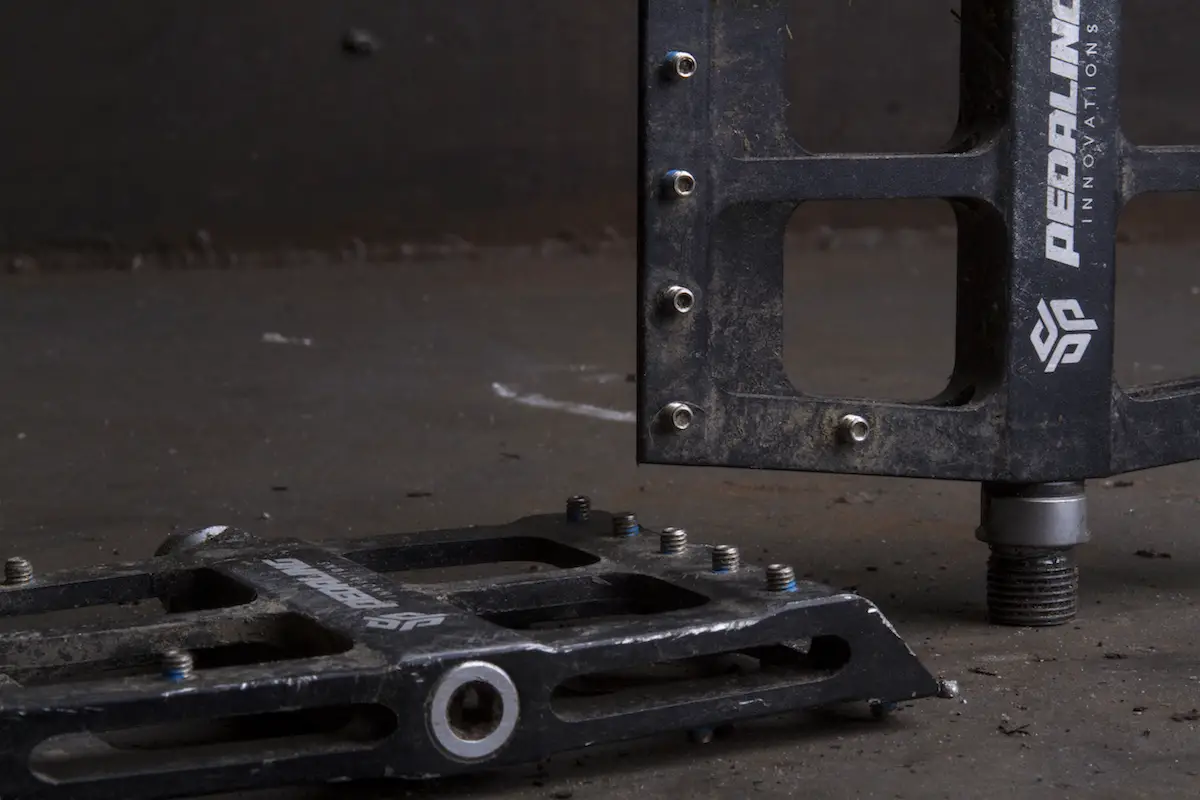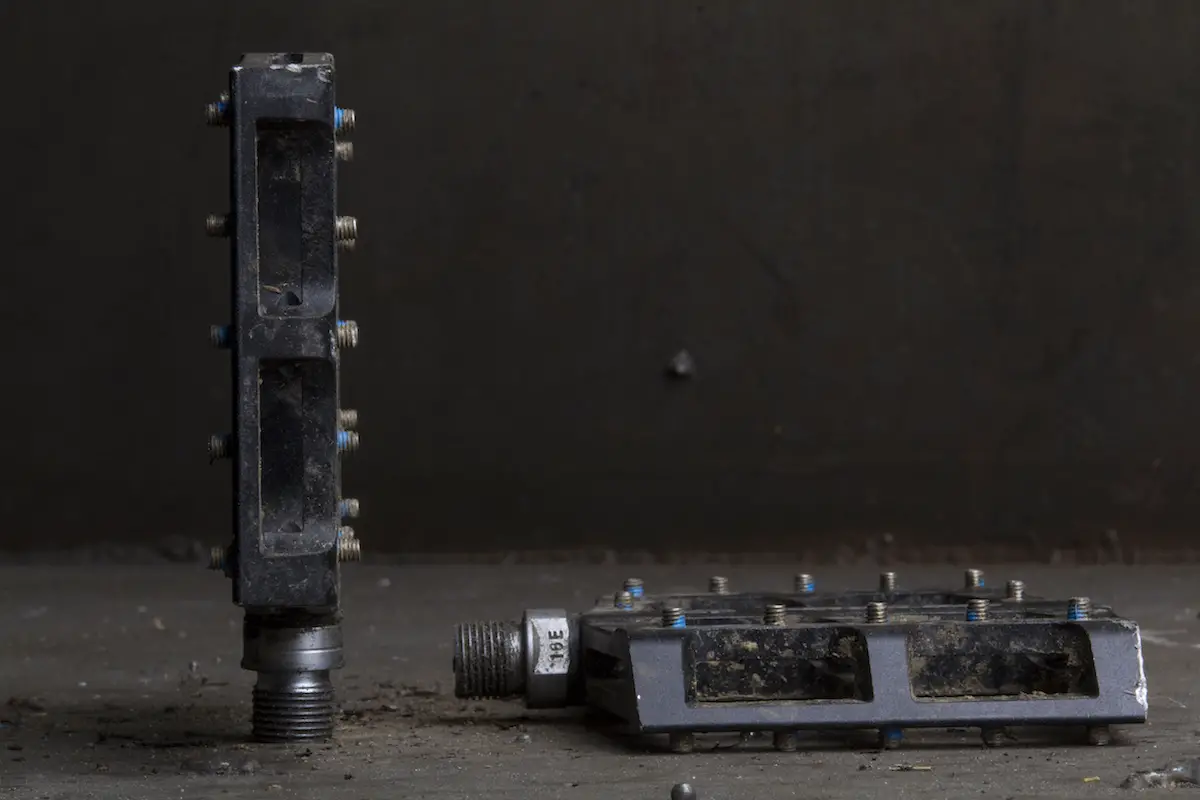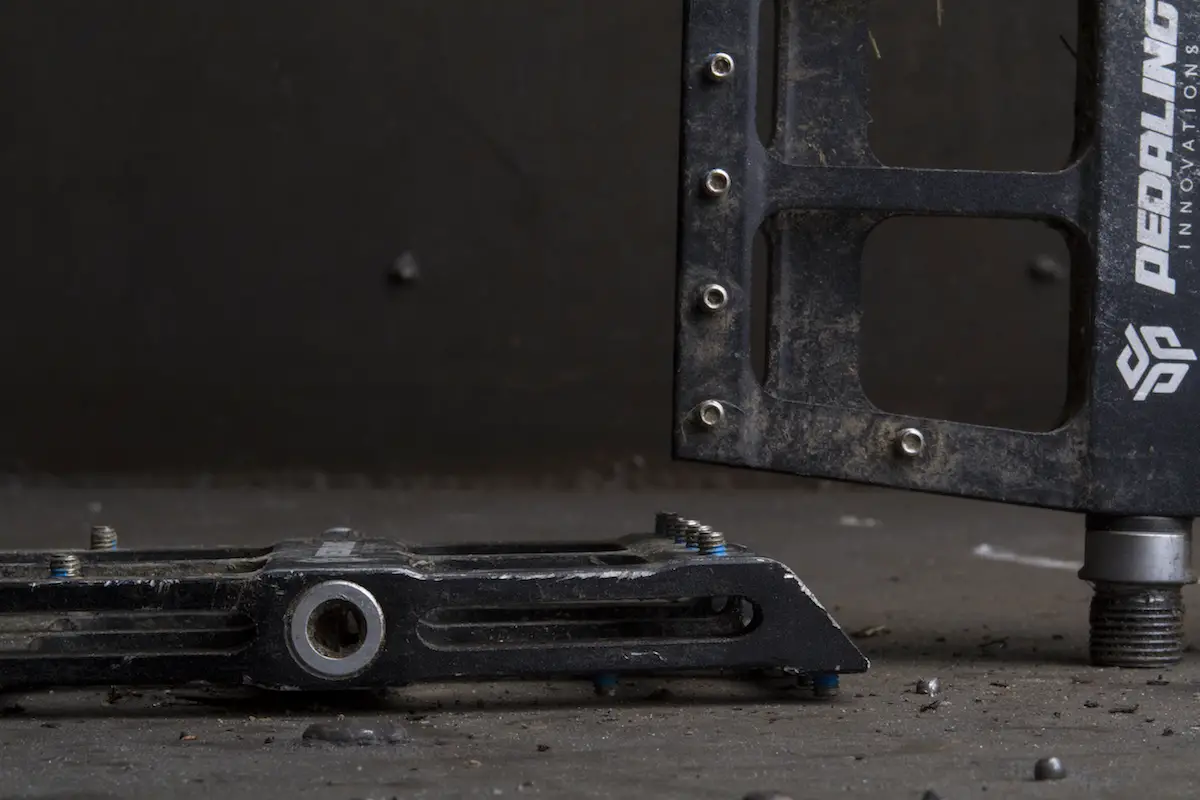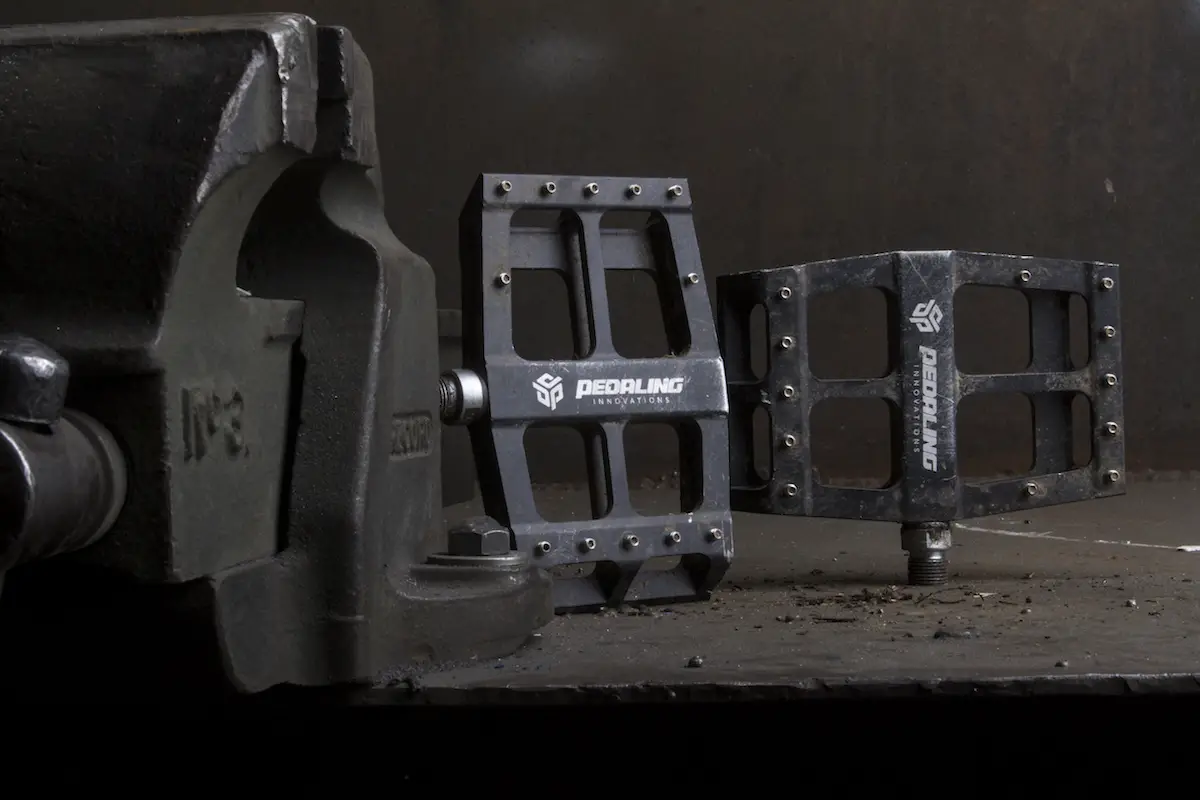In Issue #113 of Singletrack Magazine, we tested 17 different pedals as part of our Flat Pedal Group Test.
With the largest platform of any flat pedal I’ve ever used before, the Catalyst from Pedaling Innovations is unlike anything else on the market. I’ll admit I was extremely sceptical when these arrived, but read up on and diligently practiced the technique and foot position you’re meant to use. After the first few rides in Calderdale, I wasn’t really feeling much difference, but I strongly suspected winch and plummet wasn’t the ideal sort of riding for them.

I’d been meaning to do the Mary Towneley Loop (MTL) for ages, and a couple of friends just happened to be planning it too. So, thinking such XC riding would tell me whether or not the Catalysts really made a difference, I whacked them back on the bike and we set off. Around the familiar trails of Watergrove, they felt functional, though not exceptional. At first I kept having to remind myself to put my feet in the right places.

They way they’re designed and ramped means that, whichever surface is touching your foot, the pedal body is elongated forwards. Platform width is 95mm, but length of the top surface is a whopping 130mm, with about a centimetre more of that in front of the axle. As a result, the body supports your foot at both ends of the arch.
If you leave your seat position be, this also brings your foot a little further forwards than normal, slightly expanding the difference between standing and sitting positions. Technically, this standing position alteration should improve cornering traction by putting more weight on the front wheel.

On the MTL, I wasn’t really feeling much difference until we got to Rooley Moor Road which, if you include some of the parts just before it, easily gives you four kilometres of climbing at an average grade of 5%, occasionally 10 – 14%.
As we ascended I noticed my legs behaving differently. My quads felt more supported at either side just above the knee, likewise my calves felt like more surrounding muscles were involved, and my pedal stroke got smoother. By the end I was feeling noticeably less fatigued than I’d normally expect, and hadn’t faded over the length of the climb.

To make sure it wasn’t a placebo effect, when we got about two thirds of the way around the loop, I swapped the Catalysts out for some favourite flats. As soon as I stood up on them, my calves and quads tensed up, starting to burn. On the remaining climbs, I found that even without the extra support, I unconsciously moved my feet forward on the pedals to reproduce the Catalyst climbing position, and it was more comfortable. After 45 miles, I even had stamina to clean some technical climb sections that I normally struggle with.
In other riding, particularly steep and rocky descents, I found the grip a little lacking compared to my usual flats, but I don’t think that’s what these are aimed at. The bodies are also a little basic, and seem like more engineering could be done to shed weight, which at present stands at 505g, making these the heaviest pedals in this group test by around 70 grams. Innards are the pretty generic bearing and bushing combination found in most flats, and did just fine at holding out grim weather.

Overall
When something unconventional does what it claims to, it’s often a pleasant surprise. The Catalysts seem to do exactly what inventor James Wilson claims, dramatically reducing my fatigue on long rides and climbs. They also made me think a bit more about my pedal stroke and efficiency. These pedals are certainly not all rounders, and definitely not the best for death-gnar, but I think a worthwhile and reasonably priced experiment for flat-curious XC riders.





